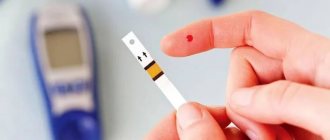Signs that make it easy to determine a person’s character by their teeth
Shape of teeth
says a lot about a person, and you can determine
the type of person by his teeth
by paying attention to the following signs of the dentition:
Upper incisors
| People with long incisors They are usually the life of the party, but at the same time they persistently strive for their goals and are quite open in communicating with others. Large incisors most often occur in adamant, stubborn people who persistently pursue their goal. Despite their difficult nature, those with large teeth are distinguished by their sincerity. Large gap between teeth betrays the explosive nature of their owner. In addition, the hole indicates an addiction to risk, which is not always justified. |
Fangs
It is generally accepted that large, sharp teeth
, including fangs, speak of a person’s aggressiveness. In fact, this is not always the case. In most cases, such teeth reveal a loving person. They can also talk about determination.
For example, if a woman’s upper canines are large and long
, then this can emphasize her kindness and humor.
Evenness of teeth
| A person's character can be determined by the curvature or straightness of their teeth. Ideal dentition speaks of a balanced, calm character. Such people are not afraid to make decisions and take responsibility. They are eloquent, self-confident and ready to go towards their goal no matter what. Uneven teeth speaks of the good intuition of the owner of the teeth. |
A person’s small, fox-like teeth can also tell about a person’s character.
— owners of such dentition are often characterized by lust.
Protruding teeth
characteristic of stingy people.
Teeth size
Strong large teeth
testify to a person’s courage, strength and kindness. Such people are most often long-livers.
| They will tell you what character the girl has and small teeth - often their owners are quite secretive and reserved natures. They have a small number of friends. Often people around them simply do not understand them, considering them strange. What do sparse teeth a person does not need to think for long - such teeth indicate people with a wild imagination, who always have a fresh, interesting idea in their heads: they can often even be considered strange. They are also distinguished by their tenacity of character and always go towards their goal. |
Small teeth
, among other things, can talk about greed. Such people have a hard time parting with money and are certainly not ready to spend it on others, be it relatives or friends.
Presence of damage
The presence of damage to the dentition can also indicate the character of a person
So, if
the upper row of teeth is damaged
, this will indicate difficulties in unlocking your potential, and if there are
problems in the lower part (especially in the left)
, you should think about problems in family relationships.
Baby teeth can “tell” about a child’s future
Every parent wants his heir to grow up handsome, rich and in good health. To understand what kind of future awaits the child, adults paid attention to the condition of his baby teeth.
It was believed that if they erupt for a long time and painfully, the child will grow up angry and scandalous. In principle, this superstition has a completely logical justification. After all, from the first months of life, a baby does not give others peace. This means that it is likely that he will behave even worse in the future.
Tiny apartment for rent in London. But people are confused by one thing
Russians are not averse to wearing clothes bought second-hand: coats and dresses and more
The US Heart Association names black coffee a heart-healthy drink.
And if a baby’s teeth appear very late, the child will grow up talented, successful and rich. If you believe this superstition, parents should not buy nibblers for their children. Babies do not need toys that stimulate teething. The later they appear, the richer and more successful the heir will be. After all, fate must somehow compensate him for this developmental defect. It’s a pity that such a sign is nothing more than a myth.
Eruption of fangs in babies
The baby teeth in the baby’s mouth erupt in a certain order, according to which the eye teeth appear only after all the incisors and first molars. At the same time, the upper canines emerge somewhat earlier (at 16-18 months) than the lower ones (at 18-20 months). This rather late appearance of the eye teeth is explained by their deeper location in the jaw. And for the same reason, their teething is the most unpleasant for the child.
Most mothers know that the eye teeth are the hardest teeth for children. How long does it take for a baby to cut their fangs, the body temperature may be moderately elevated, and a runny nose may appear due to swelling of the oral and nasal mucosa. During this period, the child is very capricious, whiny, his sleep and appetite are disturbed. All this is a normal reaction of the child’s body to inflammation of the gums above the erupting tooth.
But if a child has a high temperature of up to 39 degrees or higher, accompanied by coughing, vomiting, diarrhea and general intoxication, it is important to remember that these are most likely not signs of teething, but symptoms of a serious illness.
How to relieve teething symptoms?
To make the appearance of a fang less distressing for the child, a number of methods can be used:
- Light gum massage . Using a clean index finger, gently massage the gum above the eye tooth for 1-2 minutes. It is advisable to repeat this procedure 2-3 times a day.
- You can let your baby chew on special teethers with a cooling effect , which should be placed in the refrigerator for a while before use. They are usually filled with sterile distilled water, so even if a child accidentally bites through the shell, it will not harm his health.
- with pain-relieving gels several times a day . They begin to act within a few minutes and relieve pain well over the erupting tooth.
- If the appearance of eye teeth is accompanied by nasal congestion, then to relieve this unpleasant symptom you can use children's vasoconstrictor drops (Otrivin, Nazivin, Quix).
- When the temperature rises above 38 degrees, it is necessary to take antipyretic drugs (Paracetamol or Ibuprofen), which are available in child-friendly forms: syrup or suppositories.
How many days such activities need to be carried out for each child is decided individually. In any case, you should consult your pediatrician.
Strange "seedlings"
As you know, not only children, but also adults lose teeth.
Some superstitious people do not leave lost body parts in the dentist's office, but bury them in pots of violets or geraniums. According to the sign, this will bring good luck and wealth. By the way, it is still customary for gypsies to bury extracted wisdom teeth in the cemetery. Representatives of this people believe that such a ritual brings material well-being.
We need vitamin D: an expert tells us how to deal with the spring blues
A box with seedlings needs to be ventilated daily: how to grow strawberries correctly
Does a cat need our hugs, and how does it choose its owner?
Fangs are a sign of anger
For any modern mother, the absence of such teeth in a baby is a reason to visit a dentist. But in some African and Asian countries, fangs are a sign of anger.
If the baby's teeth erupt first, the baby and his mother are kicked out of the village so as not to bring trouble to the rest of the inhabitants of the settlement. In some tribes, it is still customary to knock out the fangs of young men so that they behave prudently, do not show aggression, and sorcerers from enemy tribes cannot turn them into animals.
Study: Urban women are less likely to have children than rural women
Graphic tees paired with leather pants: street fashion for fall 2021
Bright bags: how to diversify your look with trendy accents this spring
Pregnancy and tooth loss
For many years, the birth of girls was considered an unpleasant event. But mothers and fathers were very happy about the birth of boys. After all, male children played the role of breadwinners of the family. The expectant mother carefully monitored all the signs that, according to popular belief, indicated the birth of a boy. One of these characteristic signs was considered to be poor dental condition during pregnancy. People believed that the son was “taking” them away from his mother. Experts say that this sign has no relation to reality. And it does not at all indicate that the future baby is male.
Big teeth or not: how to determine?
The normal physiological size of teeth has clear boundaries. The central upper incisors, which most often seem too large to their owners, should be from 9 to 13 millimeters in length in an adult, depending on height. The lateral incisors are usually 2 millimeters shorter. As for the ratio of the width and height of the dental crown, ideally it is 1.25%, and the lower this figure, the larger the teeth are considered. However, do not panic if your parameters differ from ideal ones: macrodentia is diagnosed when the size of the teeth exceeds the norm by at least 1.5 times.
Macrodentia can be absolute or relative (individual). The absolute sum of the width of the crowns of the four upper incisors reaches 35 millimeters, and the lower ones – 27 millimeters. If this number is 1 - 2 millimeters less, then the pathology is relative.
Formulas for calculating proportions
The normality of the crown part of the teeth is determined not by their size, but by the width and length of the dental arches, which are considered normal for a specific group of patients.
If the length and width of the arch correspond to the norm, and all the teeth on it are located without crowding or gaps, then their sizes are considered normal.
Many different techniques have been proposed to determine the normality of the jaw arches, taking into account the age, facial type and nationality of the patient. Three of them are discussed below - the Gerlach, Pon-Linder-Hart and Corkhouse methods.
Gerlach method
According to the Gerlach method, the dentition is divided into 3 segments:
- anterior, consisting of 4 incisors;
- two lateral ones, consisting of canines, premolars and the first molar.
Next, the calculation is made according to the following algorithm:
- The length of each segment is measured. In this case, the value of the length of the lower frontal segment is obtained by multiplying the length of the upper frontal segment by the Tone coefficient (1, 35).
- Compare the obtained lengths of the segments with each other and the tabular data compiled by Gerlach. With normal jaw sizes, they must be in certain proportions to each other.
If it turns out that the dimensions of the arches are normal, and there is no crowding or gaps, then the dimensions of the clinical crowns are normal.
Reference. All methods used involve measurements of dental arches at strictly defined points and according to certain methods. Because of their relative complexity and length, they are not included here. But they can be easily found in numerous sources.
Pon-Linder-Hart method
This technique is intended to determine the normal width of the dental arches in children with variable and permanent dentition. In this case, the formula developed by Pont is used and has the following form:
A ∶ 80 × 100 = distance between first premolars
A ∶ 64 × 100 = distance between first molars, where:
- A – total width of 4 incisors;
- 80 and 64 – Pon coefficients (indices).
Linder and Hart found that these coefficients for children of German nationality should be 85 and 65, respectively.
The algorithm for determining the parameters of the upper jaw according to Pon-Linder-Hart is as follows:
- The total width of all incisors along their cutting edge is measured.
- The obtained data is substituted into the Pon formula, and the distance between the first painters and premolars is calculated.
- The actual width of the dental arch between premolars and molars is measured.
- The measured value is compared with the results determined using the Pon formula.
- A conclusion is made about the compliance of the width of the arches and the size of the crowns with the norm.
Based on the data obtained, a treatment plan is developed. In particular, when the row in the area of premolars and molars is narrowed by more than 6 mm, it is recommended to remove some units or widen the jaw.
Corkhouse method
The Corkhouse method is based on the relationship that exists between the total width of the maxillary incisors and the length of the anterior segment of the jaw arch, measured according to a certain scheme.
The following algorithm of the Corkhouse technique is used:
- The total width of the 4 maxillary incisors is measured.
- The length of the anterior segment of the jaw arch is measured. This is done using a technique developed by Corkhouse by connecting certain points on the occlusal surface.
- The actual size of the arc segment is compared with the desired one.
Based on the data obtained, a conclusion is made that the size of the teeth and arches corresponds to the norm, and a treatment plan is developed.
Bite correction: has it always been welcomed?
Today, many people turn to orthodontists to get rid of gaps between their front teeth. But in ancient times people were in no hurry to do this. This feature was considered a sign of happiness and prosperity. However, modern doctors, on the contrary, convince patients to correct this defect. Otherwise, the gap will begin to cause physical discomfort, which is by no means associated with a prosperous life.
Wall sconces and a few more inexpensive ways to style your bathroom
Excess weight can cause snoring: tips for getting rid of discomfort during sleep
Sleep, goals and more: the doctor told what is more important for weight loss than sports
Treatment methods
In cases where “short” teeth do not affect the functionality of the dentofacial apparatus, they are a purely aesthetic problem, and their correction is determined by the patient’s desire.
But if a functional problem is added to a cosmetic problem, the doctor must recommend mandatory treatment to the patient. Its method depends on the diagnostic results.
There are three main methods of treatment. Two of them are surgical – frenulum cutting and gum grafting. 3rd – prosthetic. Sometimes orthodontic correction is performed before microdentia treatment.
Lip frenulum trimming
If the cause of “short” teeth is a long frenulum hanging over the crowns, it is trimmed and sutured. The operation is performed under local anesthesia at any age .
Gum plastic surgery
The technology is used for microdentia of several adjacent teeth. A prerequisite for gum surgery is the healthy condition of the dental and periodontal tissues in the area of the operation.
Gumplasty or gingivectomy involves excision of the edge of the gum to expose part of the clinical crown and increase its height. As a result of the operation, the position of the gum line changes.
As an additional treatment after gum surgery, remineralization of teeth may be necessary, since the less mineralized part of the crown located under the gum may have increased sensitivity to mechanical and chemical influences. That is, the patient will suffer from hyperesthesia.
Veneers and Lumineers
Treatment of “short” teeth with veneers and lumineers is recommended for isolated, single microdentia, trema and diastema.
With the help of thin onlays fixed to the vestibular surface of the enamel, most visual defects can be corrected, and “short” teeth are no exception. Covering them with veneers and lumineers allows you to create the full effect of a normal size.
The advantage of the method is that with the help of veneering you can change the size of the crown in any direction, both in height and width. Its main disadvantage is the relatively high price, which increases when using lumineers or veneers made of high-quality materials, such as zirconium oxide, for example.
If none of the above methods are suitable for a particular case of microdentia, you can use prosthetics - installing artificial crowns or even bridges. The latter case requires the removal of a “short” tooth that cannot be corrected.
Problems with large teeth
Whenever we talk about a slight deviation from the norm or a slight disproportion, enlarged crowns do not entail any problems. Large front teeth are in fashion today, as they give the face a more youthful appearance, so it is not always possible to even talk about aesthetic flaws. But if we are talking about pathology, then too large teeth entail unpleasant consequences.
- Large teeth do not have enough space, which is why they can curl and extend beyond the dentition. This forms an incorrect bite and affects not only the aesthetics of the smile, but also digestion.
- A large molar in a child often causes a delay in the eruption of neighboring teeth.
- If the patient’s teeth are not large by nature, but have become so over time, this indicates gum disease. It must be cured before proceeding with the elimination of aesthetic defects.
- Teeth that are too large can distort speech.
- People with disproportionate teeth face psychological problems: they are embarrassed about their smile, try to communicate less, and feel self-conscious.
Family planning
In ancient times, people did not use contraception. Women gave birth to as many children as God pleased. But mom and dad still wanted to know how many mouths they would have to feed until the heirs grew up and were able to work. The number of future children was determined by how many teeth the baby would have before one year of age.
But most modern parents do not plan to have a large number of heirs. Therefore, the sign has changed a little. Grandmothers and aunts determine the number of future children by the number of teeth on the upper jaw of a one-year-old baby.
Is it worth attaching importance to signs?
There are many superstitions that modern people inherited from their ancestors. Today, some people do not attach importance to signs. Other people, on the contrary, take them seriously. Attitude towards superstitions is everyone’s personal choice. But you need to monitor the health of your teeth and oral cavity from childhood.
It is necessary to visit the dentist regularly, treat diseases in a timely manner, and observe the rules of hygiene. These activities will help you maintain good health and avoid many problems.
Found a violation? Report content
Dangerous consequences of microdentia
At first glance, it seems that small teeth in an adult cause only aesthetic inconvenience, but this is not so. Dentists identify several quite serious problems that microdentia can lead to.
- Distal displacement of teeth,
that is, their gradual shift back relative to the optimal position in the jaw. - The appearance of gaps between the teeth
(the so-called diastemas and threes), which lead to disruption of the contact of the lateral surfaces of the teeth. Without support, the ligaments in the dental bed stretch and the tooth becomes unstable. - Diction disorders,
excessive amplification of hissing and whistling sounds in speech. - Periodontal disease
is a disease of the soft tissues of the jaw, caused by accumulations of bacteria in the interdental spaces and an enlarged periodontal pocket due to the high mobility of the tooth.










